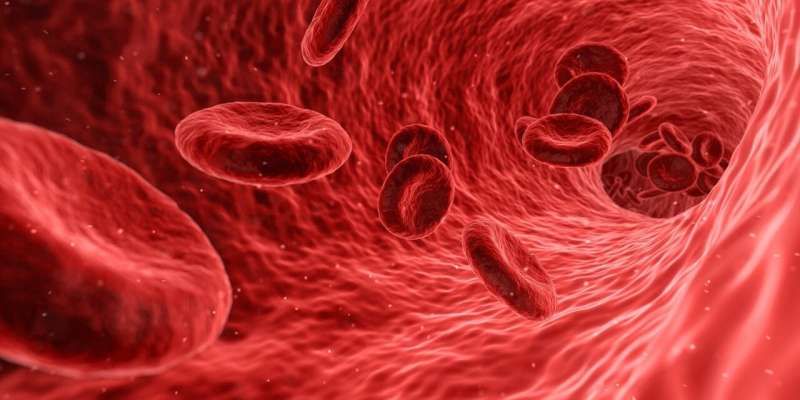Credit: CC0 Public Domain
A nanoparticle therapy developed by investigators at University Hospitals (UH) and Case Western Reserve University targets overactive neutrophils, a specific kind of white blood cell, to prevent almost all types of blood clots while causing no increased risk for bleeding. The preclinical findings, published in Science Translational Medicine, may lead to safer ways to care for patients impacted by blood clots. According to the Centers for Disease Control and Prevention (CDC), roughly 900,000 people in the U.S. suffer from life-threatening blood clots each year.
"What we are showing for the first time is that neutrophils are key drivers of both arterial and venous thrombosis. And when you target a neutrophil, you do not increase bleeding risk, you only decrease clotting risk," said Lalitha Nayak, MD, study lead author, hematologist/oncologist at UH Seidman Cancer Center, member of the Developmental Therapeutics Program at Case Comprehensive Cancer Center, and associate professor at Case Western Reserve School of Medicine.
Historically, arterial and venous thrombosis have been thought of as distinct molecular events that require separate treatment paradigms. Arterial thrombosis (an artery clot), which can cause heart attack or stroke, is commonly treated with antiplatelet agents like aspirin, while anticoagulants are used to treat venous thrombosis (a vein clot), a cause of pain or swelling in the legs or clots in the lungs.
More recently, however, experts have begun to suspect commonalities between the two events that could be leveraged as novel therapeutic targets.
In the new study, Nayak and colleagues use animal models to show that overactive neutrophils participate in both arterial and venous thrombosis through an increased capacity to migrate and adhere to sites of injury. They also show that overactive neutrophils increase the production of key factors used as building blocks for clots.
In seeking to halt the process, the researchers identified a cluster of receptors unique to activated neutrophils and developed antibody-coated nanoparticles that specifically target those clusters.
"Because neutrophils have an important role in innate immune function, if we target all neutrophils, we will increase our risk for infections. But here, we are beginning to say that we can identify activated neutrophils and only prevent them from participating in the clot," said Nayak.
Other therapeutic mechanisms for targeting activated neutrophils may hinge on Krüppel-like factor 2 (KLF2), a transcription factor that the researchers identified as central to neutrophil activation.
"It was interesting that we change one transcription factor in the neutrophil, and it does all of this," Nayak said. "Can we look at therapies that just increase KLF2 to keep neutrophils quiescent? We have so many avenues for therapy here."
Nayak emphasizes that while this research is likely to impact the field of thrombosis at large, these findings may be especially impactful for patients with pancreatic cancer or other cancers for which blood clots are a common complication. Blood clots are a leading cause of death in people with cancer after the cancer itself, according to the CDC.
"About 40% of all pancreatic cancer patients can develop a clot before they die," she said. "The next steps in our research involve using a mouse model of cancer-associated thrombosis to see whether we could use nanoparticles as targeted therapy in this case."
More information: Lalitha Nayak et al, A targetable pathway in neutrophils mitigates both arterial and venous thrombosis, Science Translational Medicine (2022). DOI: 10.1126/scitranslmed.abj7465
Journal information: Science Translational Medicine
Provided by University Hospitals Cleveland Medical Center























